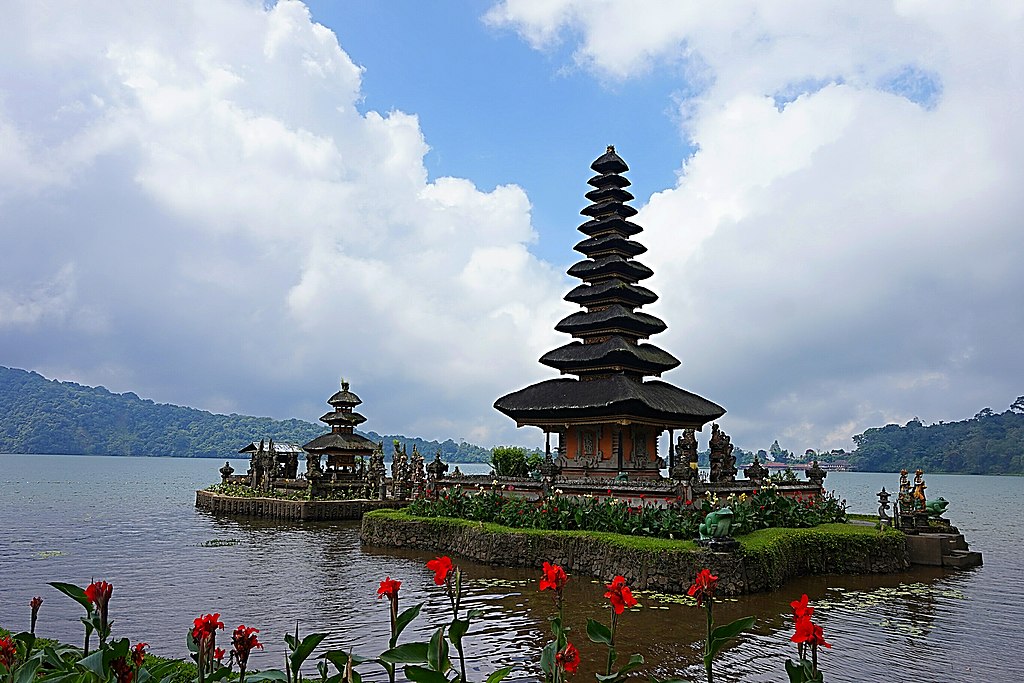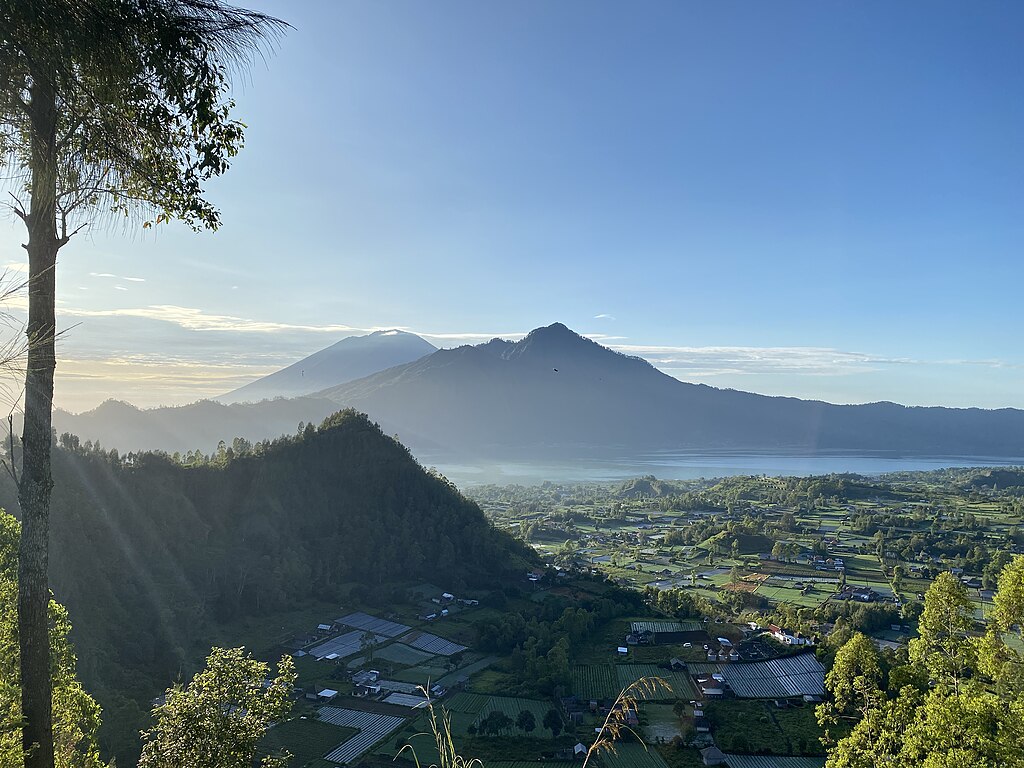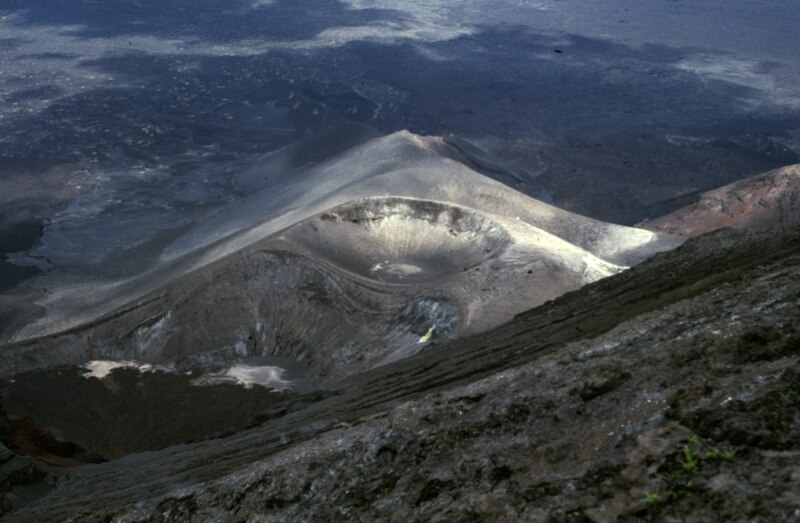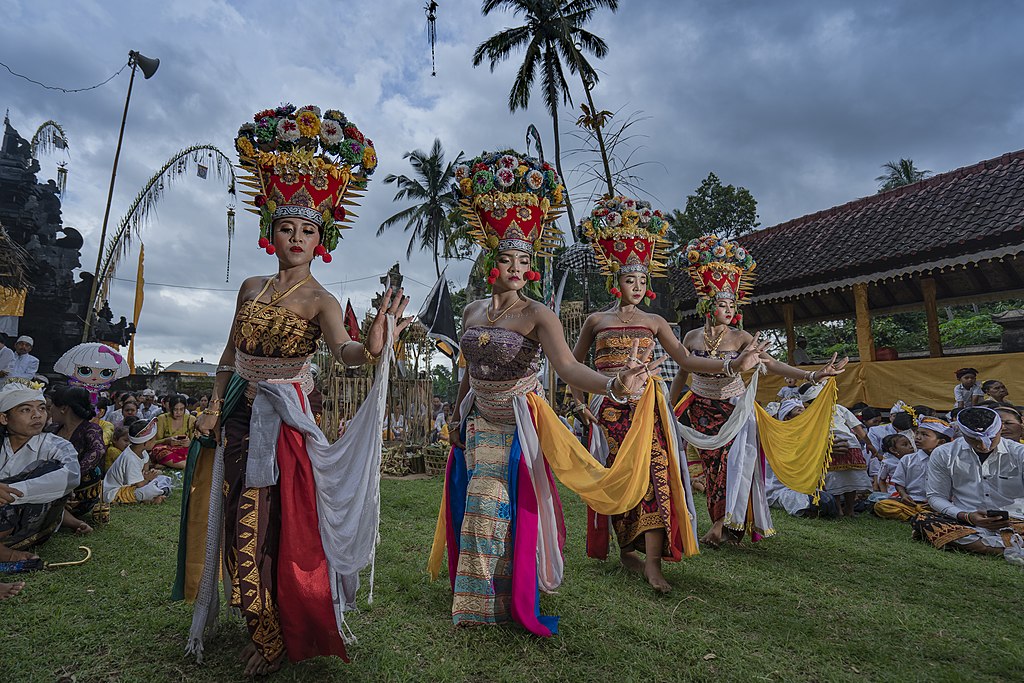Exploring Bali’s Cultural Gems and Natural Wonders: A UNESCO Sites and Geopark in Bali
Bali, the captivating island of Indonesia, is renowned for its stunning beaches, vibrant culture, and mesmerizing natural beauty. Exploring these UNESCO Sites and Geopark in Bali offers an enriching experience, diving into the island’s cultural depth and natural splendor.
Beyond its idyllic landscapes, Bali holds a rich cultural heritage, recognized by UNESCO with the inscription of three remarkable sites as World Heritage Sites. Additionally, Bali boasts the Batur UNESCO Global Geopark, a natural wonderland that showcases the island’s geological heritage. Embark on an immersive journey through Bali, discovering its cultural treasures, natural wonders, and the unique geological features that make it a UNESCO-designated destination.
While transportation is primarily by road, guided tours or local guides can enhance the understanding and appreciation of these significant landmarks.
Bali’s rich cultural tapestry is further enriched by three distinct genres of traditional dance, each with its own unique style, purpose, and significance. These dance forms, collectively known as the “Three Genres of Traditional Dance in Bali,” have been inscribed on the UNESCO Representative List of the Intangible Cultural Heritage of Humanity in 2015.
Whether you’re seeking an adrenaline-pumping hike, a relaxing boat ride on Lake Batur, or a cultural immersion into Balinese traditions, the Batur UNESCO Global Geopark offers an unforgettable experience for everyone. Embark on a journey of discovery and unveil the wonders of this volcanic paradise.
UNESCO World Heritage Sites in Bali:
- Subak System of Cultural Landscape
- Pura Ulun Danu Bratan (temple)
- Pura Besakih (temple), has been nominated for UNESCO recognition due to its profound cultural and religious significance within Balinese Hinduism
UNESCO Global Geopark in Bali:
- Batur UNESCO Global Geopark: 1204
Unveiling Bali’s Cultural Treasures: UNESCO World Heritage Sites
Subak System of Cultural Landscape: A Symphony of Water and Rice
Venture into the heartland of Bali and discover the Subak System of Cultural Landscape, a UNESCO World Heritage Site since 2012. This intricate irrigation system, dating back to the 9th century, showcases the harmonious relationship between Balinese farmers and their environment. The Subak system, comprising terraced rice paddies, temples, and water canals, reflects the profound understanding of Balinese people of water management and their deep connection to nature.
Trek through the terraces, interact with locals, and experience the Subak irrigation process. Relax at nearby cafes offering scenic views.
No matter what you do, we’re sure you’ll be impressed by the Subak System of Cultural Landscape. It’s a truly special place that showcases the beauty and ingenuity of Balinese culture.
How to Get There:
The Subak System of Cultural Landscape is spread across five villages in Bali: Catur Angga Batukaru, Pakerisan, Jatiluwih, Manikaya, and Subak Sempol. The easiest way to access these villages is by car or motorbike. From Denpasar, you can follow the Jalan Raya Puputan toward Ubud. From Ubud, you can take the Jalan Raya Tegalalang to reach the Jatiluwih Rice Terraces. Renting a car or scooter allows flexibility to explore at your own pace. Maps and GPS navigation aid in reaching these sites.
Jatiluwih rice terraces
What to Do:
Explore the Jatiluwih Rice Terraces
Witness the breathtaking expanse of the Jatiluwih Rice Terraces, a UNESCO World Heritage Site within the Subak System. Stroll along the pathways amidst the lush greenery and marvel at the intricate irrigation system that supports the rice cultivation.

Jatiluwih, a UNESCO World Heritage site in Bali, showcases the captivating beauty of traditional Balinese rice terraces. Imacim, CC BY-SA 4.0, via Wikimedia Commons
Hike through the rice paddies
This is the best way to get a sense of the scale and beauty of the Subak System. There are several different hiking trails to choose from, so you can find one that’s the right length and difficulty for you.
Pakerisan Valley
Visit ancient temples, explore archaeological sites, and learn about Bali’s historical settlements. Some guided tours include stops at nearby historical landmarks.
Subak Landscape of Pekerisan Watershed
The Subak Landscape of Pekerisan Watershed is home to a variety of rice varieties, including local heirloom varieties that are no longer grown in other parts of Bali. The rice fields are also home to a diverse range of wildlife, including birds, butterflies, and reptiles.
Subak Landscape of Catur Angga Batukaru
The Subak Landscape of Catur Angga Batukaru is a UNESCO World Heritage Site located in the northeastern part of Bali, Indonesia. It is a complex system of rice terraces that has been managed by local communities for over 1,000 years.
The rice terraces of Gunung Batukaru form a UNESCO World Heritage Site since 2012, showcasing the exceptional Subak landscape—a testament to Bali’s traditional farming practices and the harmony between culture and nature. Arabsalam, CC BY-SA 3.0, via Wikimedia Commons
Visit Pura Taman Ayun (Royal Water Taman Ayun Temple)
Taman Ayun Temple, also known as the Water Garden Temple, is a beautiful and serene temple located in Mengwi, Badung Regency, Bali, Indonesia.
Immerse yourself in the spiritual atmosphere of Pura Taman Ayun, a royal temple dating back to the 17th century. Admire the temple’s intricate architecture and learn about its significance in Balinese culture.
Taman Ayun Temple, also known as the Water Garden Temple, is a beautiful and serene temple located in Mengwi, Badung Regency, Bali, Indonesia. It is a UNESCO World Heritage Site and is one of the most important temples in Bali. The temple was damaged in the 1917 earthquake, but it was restored in the 1930s. It was declared a UNESCO World Heritage Site in 2012.

Taman Ayun Temple. Mengwi, Badung Regency, Bali, Indonesia. LBM1948, CC BY-SA 4.0, via Wikimedia Commons
The main temple is dedicated to the Hindu gods Brahma, Vishnu, and Shiva. The bathing pavilion is used for religious ceremonies and purification rituals. The garden is a beautiful and peaceful place to relax and enjoy the natural beauty of Bali. The temple is also a symbol of the Mengwi kingdom. It is a reminder of the power and influence of the Mengwi dynasty.
Engage with Local Farmers
Interact with local farmers and gain insights into the traditional rice cultivation practices in Bali. Learn about the Subak system’s sustainable approach to agriculture and its role in preserving Balinese culture.
Pura Ulun Danu Bratan: A Sacred Temple on Serene Waters
Embark on a journey to the shores of Lake Bratan and discover Pura Ulun Danu Bratan, a UNESCO World Heritage Site since 2012.
This magnificent temple complex, perched on the edge of the lake, exudes an aura of serenity and spiritual significance. The temple’s intricate architecture, with its meru towers and traditional Balinese carvings, reflects the island’s deep reverence for nature and spirituality. This stunning temple complex, dedicated to the goddess of the lake, Dewi Danu, showcases traditional Balinese architecture amidst a serene and picturesque setting.

Ulun Danu Bratan Temple’s tranquil ambiance, combined with its breathtaking natural surroundings, makes it a must-visit destination for those seeking both cultural enrichment and serene landscapes in Bali. Johannnindito Adisuryo (Yohanes Nindito Adisuryo), CC BY-SA 4.0, via Wikimedia Commons
How to Get There:
Pura Ulun Danu Bratan is located in the village of Bedugul, about 54 kilometers from Denpasar. To reach the temple by car or motorbike, take the Jalan Raya Puputan toward Ubud. From Ubud, follow the Jalan Raya Singapadu toward Bedugul.
What to Do:
Witness the Sunrise
Experience the magical spectacle of the sunrise over Lake Bratan, casting a golden glow upon Pura Ulun Danu Bratan. The temple’s reflection in the serene waters creates an unforgettable sight.

Experience the serene morning bliss next to Bedugul at Ulun Danu Bratan Temple. Javier Prieto, CC BY 3.0, via Wikimedia Commons
Explore the Temple Complex
Wander through the temple complex and admire the intricate architecture, including the three-tiered Meru towers, the intricately carved gates, and the serene courtyards.
The Ulun Danu Bratan Temple complex features several intricately designed shrines dedicated to various deities. These shrines, adorned with traditional Balinese architecture, stand gracefully within the serene surroundings of the temple. Each shrine holds its own significance in the religious and cultural practices, inviting visitors to admire their beauty and learn about the spiritual heritage of Bali.

At Ulun Danu Bratan Temple, discover ornate shrines honoring different deities amidst breathtaking surroundings. LBM1948, CC BY-SA 4.0, via Wikimedia Commons
Embrace the Spiritual Atmosphere: Immerse yourself in the peaceful ambiance of the temple grounds and observe the Balinese people engaged in their spiritual rituals.
Pura Besakih: The “Mother Temple” of Bali
Ascend the slopes of Mount Agung and discover Pura Besakih, a UNESCO World Heritage Site since 1996. Revered as the “Mother Temple” of Bali, Pura Besakih is a complex of 22 temples, each representing a different aspect of Balinese spirituality. The temple’s sacred location and its rich history make it a pilgrimage destination for Balinese people and a captivating cultural attraction for visitors.
Besakih Temple, often referred to as the Mother Temple, holds unparalleled significance in Balinese Hinduism. Located in the village of Besakih on Mount Agung’s slopes, it stands as the largest and most sacred Hindu temple in Bali. Its cultural and religious importance draws pilgrims and visitors alike to experience the profound spirituality and architectural magnificence of this revered site. Schnobby, CC BY-SA 3.0, via Wikimedia Commons
How to Get There:
Pura Besakih is located in the village of Besakih, about 70 kilometers from Denpasar. To reach the temple by car or motorbike, take the Jalan Raya Kintamani.
What to Do:
Witness the Sunrise
Arrive early to witness the breathtaking spectacle of the sunrise over Mount Agung, casting a golden glow upon Pura Besakih. The temple’s silhouette against the radiant sky creates an unforgettable sight.
Explore the Temple Complex
Wander through the vast temple complex and admire the intricate architecture, characterized by towering Meru shrines, intricately carved gates, and serene courtyards. Each temple within the complex holds its own unique significance and represents a different aspect of Balinese spirituality.
Observe Traditional Ceremonies
If you’re fortunate enough to visit during a religious ceremony, immerse yourself in the spiritual atmosphere and observe the Balinese people engaged in their rituals. Witness the offerings, dances, and chanting that embody the deep-rooted beliefs and traditions of Balinese culture.

The Ida Batara Turun Kabeh ceremony at Besakih Temple, held yearly in Sasih Kedasa, symbolizes a gathering of all Gods at Pura Besakih to grant blessings based on people’s devotion and karma. Paco Pater, CC BY-SA 4.0, via Wikimedia Commons
Seek Blessings at the Holy Springs
Visit the sacred springs within the temple complex and partake in the ritual of cleansing. Balinese Hindus believe that the waters possess healing properties and offer spiritual purification.
Engage with Local Guides:
Seek the guidance of local temple guides who can provide insights into the temple’s history, symbolism, and significance in Balinese culture. Their knowledge will enhance your understanding and appreciation of this sacred site.
The reasons for Pura Besakih’s non-inscription are multifaceted and include:
Pura Besakih, the “Mother Temple” of Bali, was nominated for UNESCO World Heritage Site inscription in 2012 but was not ultimately inscribed. While it remains a revered cultural and spiritual site for Balinese Hindus, it has not yet met the strict criteria for UNESCO World Heritage Site designation.
- Conservation Concerns: The temple complex faces challenges related to preservation and maintenance, with some structures showing signs of deterioration.
- Community Engagement: The nomination process requires active participation and support from the local community, which has been a complex aspect for Pura Besakih.
- Management Plan: A comprehensive management plan that outlines clear preservation, development, and tourism strategies is crucial for UNESCO consideration.
- Documentation and Research: Thorough documentation of the temple’s history, significance, and cultural impact is essential for the evaluation process.
- Authenticity and Integrity: The temple complex must demonstrate authenticity and integrity in terms of its original form, materials, and spiritual essence.
Several factors, including ongoing conservation efforts, conflicts regarding its management, or the need for more comprehensive preservation plans, could impact its consideration for UNESCO recognition. Additionally, UNESCO designations often involve complex evaluations that may take time, and sites might undergo multiple considerations before potential recognition.
Despite these challenges, Pura Besakih remains a highly significant cultural and spiritual site for Balinese Hindus. Efforts are ongoing to address the concerns raised during the UNESCO nomination process, and there is hope that the temple may be reconsidered for inscription in the future.
Best Temples in Bali | You need to visit one of them at least once during your stay in Bali
Batur UNESCO Global Geopark
Nestled amidst the lush landscapes of Bali, the Batur UNESCO Global Geopark is a haven for nature enthusiasts and adventure seekers alike. Home to the majestic Mount Batur, a still-active volcano, and a captivating array of volcanic wonders, the geopark offers visitors an unforgettable journey into the heart of Bali’s geological heritage.
Hike Mount Batur for a breathtaking sunrise trek. Visit the volcanic craters, hot springs, and take in the mesmerizing views of Lake Batur.

Batur Geopark in the morning. Paco Paulus Pater, CC BY-SA 4.0, via Wikimedia Commons
How to Get There:
The journey from Denpasar to Batur Geopark by motorbike offers a more scenic and adventurous experience. Follow the same route as mentioned above, but take the time to stop along the way and enjoy the breathtaking views of the surrounding landscapes.
What to Do:
Withness the sunrise
The sunrise view from Batur is simply breathtaking. As the sun begins to ascend, it paints the sky with vibrant hues, casting a mesmerizing glow over the entire landscape. Below, Lake Batur shimmers in the early morning light, creating a tranquil and reflective surface.
Catch the sunrise from Batur and witness the magic unfold as Lake Batur and Mount Agung come alive in the morning light. glimpsing Mount Rinjani on Lombok adds to the enchantment of the view.
In the distance, the silhouette of Mount Agung stands majestically, adding a sense of grandeur to the panorama. Its prominence in the backdrop adds a dramatic touch to the sunrise scene. To the left, the outline of Mount Rinjani on Lombok emerges, creating a stunning vista that showcases the interconnected beauty of Bali and its neighboring island.
This picturesque view from Batur captures the essence of Bali’s natural splendor, combining the serenity of the lake, the awe-inspiring presence of Mount Agung, and the distant allure of Mount Rinjani. It’s a sight that evokes a sense of wonder and appreciation for the breathtaking landscapes of Indonesia.

The sunrise from Batur is stunning. Below, Lake Batur reflects the early morning light. In the distance, Mount Agung and, to the left, Mount Rinjani on Lombok, complete the breathtaking view. Aaron Rentfrew, CC BY-SA 4.0, via Wikimedia Commons
Hike Mount Batur for a Breathtaking Sunrise Trek at 1717 meters (5633 ft)
Embark on a thrilling sunrise trek to the summit of Mount Batur, where you’ll witness a panoramic spectacle as the sun paints the sky with hues of gold and crimson. The challenging ascent is rewarded with breathtaking views of the surrounding landscapes, including the shimmering waters of Lake Batur and the verdant rice paddies that blanket the foothills.

Mount Batur summit sign. Christophe95, CC BY-SA 4.0, via Wikimedia Commons
Hiking Mount Batur in Bali | Hike to witness the sunrise from the top of the volcano!
Explore Volcanic Craters and Hot Springs
Venture into the heart of the geopark and discover the awe-inspiring volcanic craters, remnants of Mount Batur’s explosive past. These craters are evidence of the volcano’s historical eruptions and form an intriguing part of the geopark’s landscape. Descend into the Batur Caldera, a vast depression formed by a massive volcanic eruption thousands of years ago.

One of the craters of Mount Batur. Christophe95, CC BY-SA 4.0, via Wikimedia Commons
After the trek, unwind in the natural hot springs nearby, a perfect way to soothe tired muscles while relishing the stunning vistas of the lake and the volcanic terrain. Feel the warmth of the earth beneath your feet as you explore the geothermal landscapes, including steaming vents and bubbling mud pools.
Visit Kintamani Plateau
Kintamani is a district in the Bangli Regency of Bali, Indonesia. It is located in the northeastern part of the island, and is known for its stunning natural beauty, including Mount Batur, Lake Batur, and the Kintamani Plateau.

Mount Batur, Kintamani region in Bali. The Mount Batur area in Bali encompasses the stunning Kintamani plateau and surrounding regions, offering breathtaking views and a wealth of experiences for visitors. Eka343, CC BY-SA 4.0, via Wikimedia Commons
Discover the Serenity of Lake Batur
Immerse yourself in the tranquility of Lake Batur, a serene crater lake nestled amidst the volcanic landscapes. Take a refreshing boat ride on the lake’s tranquil waters, soaking in the breathtaking views of Mount Batur and the surrounding peaks.
The lake sits within the caldera of Mount Batur and offers visitors opportunities for activities like hiking, hot springs bathing, and enjoying the serene ambiance. The area around Lake Batur is also known for its traditional villages, making it a compelling destination for exploring both natural beauty and local culture.

Lake Batur is a beautiful volcanic lake located in Bali, Indonesia. It’s renowned for its stunning views, surrounding landscapes, and the cultural significance it holds for the local community. LBM1948, CC BY-SA 4.0, via Wikimedia Commons
Unveil the Geological Heritage of Batur Geopark
Embark on a journey of geological discovery as you explore the Batur Geopark’s unique rock formations, lava flows, and volcanic ash deposits. Learn about the geological processes that shaped the geopark’s diverse landscapes, and gain a deeper appreciation for the interconnectedness of nature’s wonders.

Mount Batur crater. Exploring the Mount Batur crater provides an immersive experience into the island’s volcanic history and offers a chance to marvel at the raw, unspoiled beauty of this geological wonder. Steijlen, Fridus, CC BY 4.0, via Wikimedia Commons
Embrace the Cultural Essence of Bali
As you explore the Batur Geopark, immerse yourself in the vibrant culture of Bali. Engage with local communities, learn about their traditions, and savor the flavors of authentic Balinese cuisine. Discover the harmonious coexistence between the Balinese people and their natural environment, a testament to their deep respect for nature.

Near Lake Batur in the Bangli Regency of Bali, Indonesia, you can often find charming wayside shrines or small temples known as “penunggun karang” or “penungguh karang.” These shrines hold significant cultural and spiritual importance for the local Balinese community. LBM1948, CC BY-SA 4.0, via Wikimedia Commons
Hindu Gods and Goddesses in Bali | A Guide to the Most Important Deities
Three genres of traditional dance in Bali, The National Intangible Cultural Heritage of Indonesia UNESCO
Balinese dance comes in three types: some are religious, some are partly religious, and others are for everyone’s enjoyment. Dancers wear colorful outfits with shiny decorations, showing flowers and animals. These dances are about nature and represent different traditions and beliefs. Dancers use special moves and expressions to show feelings like happiness or sadness. Music from instruments called gamelan accompanies the dances.
Dancers need more than just skill—they also need to have a special kind of energy and be humble and disciplined. In Bali, kids usually learn these dances from a young age in groups. They start with simple moves and keep practicing until they remember everything.
Learning these dances helps people feel connected to their culture and ancestors, making them feel proud of their heritage.
Tari Wali:
Tari Wali, meaning “sacred dance,” is the most revered form of Balinese dance, reserved for religious ceremonies and temple rituals. These dances embody deep spiritual beliefs and are performed by trained dancers who possess a profound understanding of their sacred significance. Exampels of Wali Sacred Dances (Rejang, Sanghyang Dedari, Baris Upacara),

Rejang is a sacred Balinese dance performed in religious ceremonies. Female dancers, adorned in traditional attire, move gracefully with precise gestures, symbolizing purity and devotion to the gods. This revered dance invokes blessings and harmony during temple rituals, embodying deep spiritual significance in Balinese culture. EGimaging, CC BY-SA 4.0, via Wikimedia Commons
Tari Bebali:
Tari Bebali, meaning “semi-sacred dance,” serves as a bridge between the sacred and the secular, often performed during religious festivals and community events. These dances are characterized by their lively rhythms, intricate movements, and captivating storytelling, showcasing the island’s vibrant cultural heritage. Exampels of Bebali Semi sacred Dances (Topeng Sidhakarya/Topeng Pajegan, Gambuh dance drama, Wayang Wong dance drama).

The Sidakarya Mask Dance is a traditional Balinese dance that portrays stories from ancient folklore and Hindu epics. Dancers wear vibrant masks, each representing characters like gods, demons, or animals. Through intricate movements and expressions, the dancers bring these characters to life, telling tales of battles, love, and mythology. The dance is a captivating blend of artistry, cultural heritage, and storytelling that continues to enchant audiences with its vibrant display of Balinese traditions. Made Gianni Kania Dewi, CC BY-SA 4.0, via Wikimedia Commons
Tari Balihan:
Tari Balihan, meaning “dance for entertainment,” is the most widely performed genre, captivating audiences with its energetic movements, expressive facial gestures, and playful interactions with spectators. These dances range from humorous and lighthearted to more stylized and sophisticated performances. Exampels of Balih-balihan Entertainment Dances (Legong Kraton, Joged Bumbung, Barong Ket).

The Legong Kraton dance is a classic and enchanting Balinese dance known for its grace and beauty. Typically performed by young girls, it tells tales of love and mythical stories through intricate movements, delicate gestures, and vibrant costumes. Accompanied by the mesmerizing sounds of the gamelan orchestra, this dance captivates audiences with its elegance, portraying Balinese cultural richness and storytelling traditions. Flying Pharmacist, CC BY-SA 3.0, via Wikimedia Commons
Sources: UNESCO, UNESCO (map), ResearchGate (Pura Besakih: A World Heritage Site Contested), UNESCO Intangible Cultural Heritage
Sustainable Travel Options in Bali: Minimize Your Footprint, Maximize Your Experience
Photo credit (main picture): MadebyNastia via Pixabay
Photo description: Supreme water temple Pura Ulun Danu Batur.
Things To Do in Bali and What to Visit, Where To Go While Vacationing in Bali? (Top Attractions)
Your First Step in Bali: Explore the UNESCO World Heritage Sites, then Secure Your Villa in the Heart of Lively Seminyak!
Located in Seminyak Center – Bali, Villa Carissa offers a private swimming pool and enclosed garden to guarantee your privacy. You can book your private pool villa here with us.
Whether you’re embarking on a memorable family trip, a fun-filled adventure with friends, or a romantic escapade, Villa Carissa in the heart of Seminyak provides the ideal sanctuary to discover Bali’s diverse attractions and savor a rejuvenating vacation. With its prime location, Villa Carissa ensures an unforgettable experience for all travelers seeking relaxation and exploration. Book now to create cherished memories in this exquisite haven.



